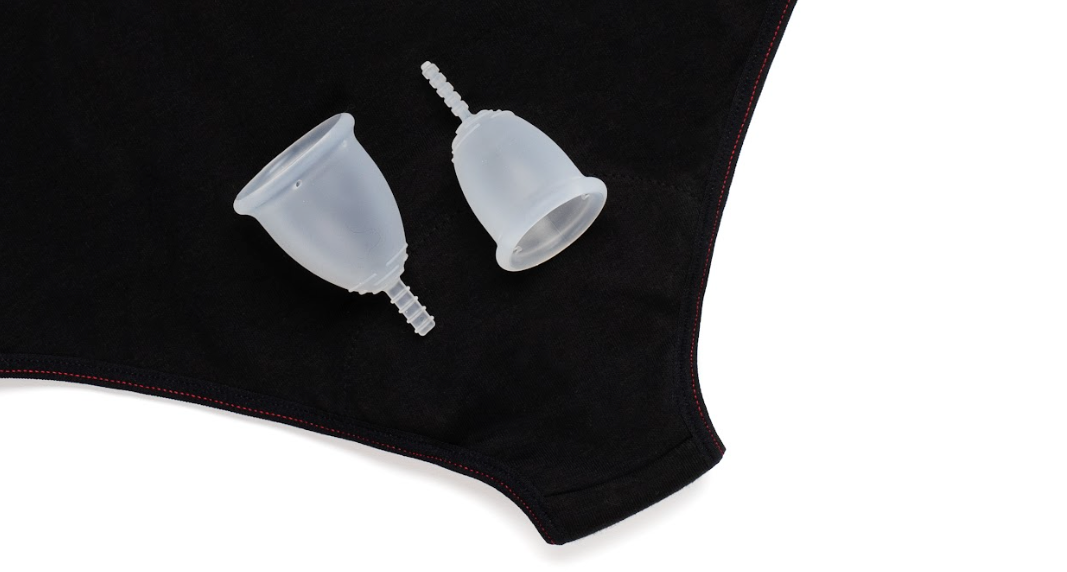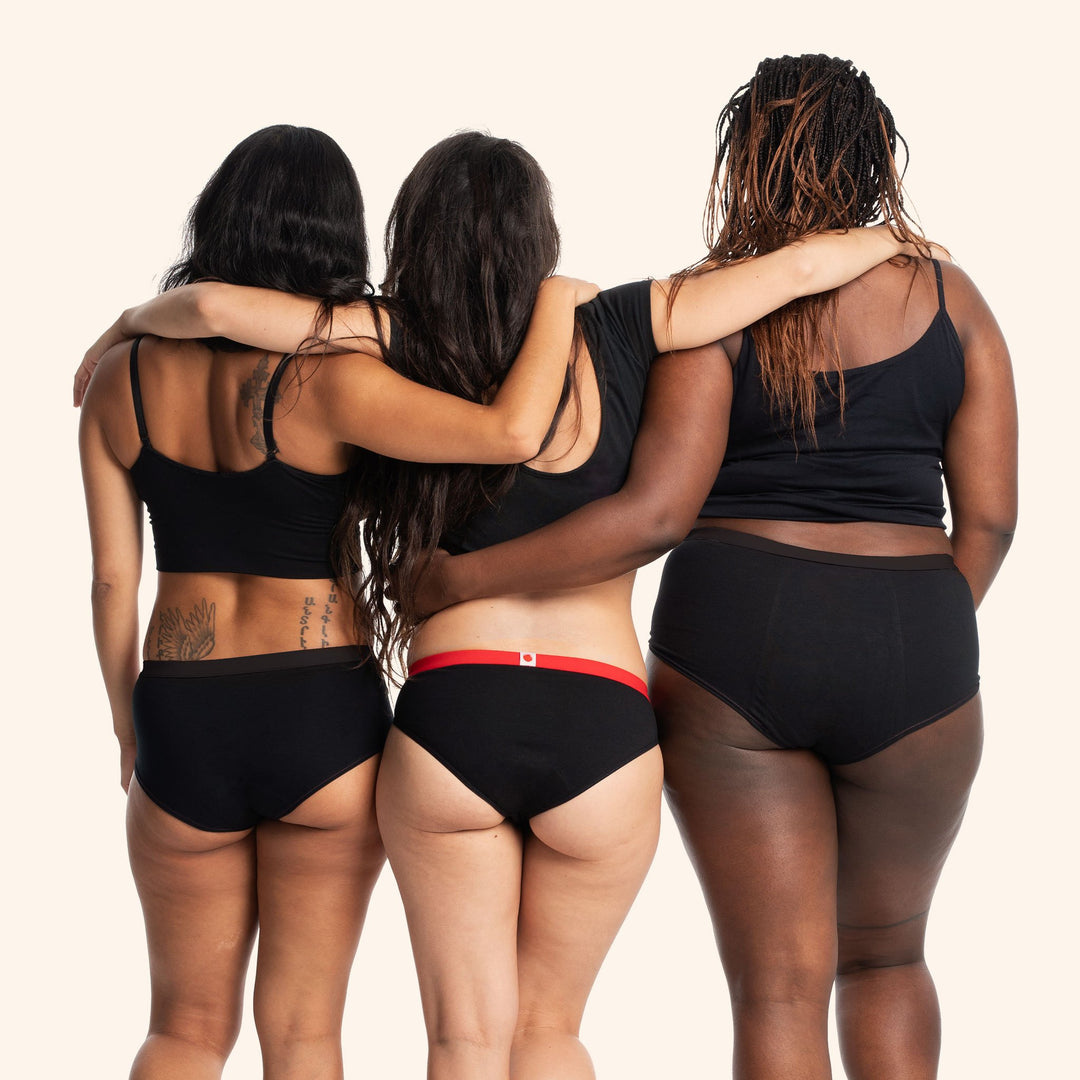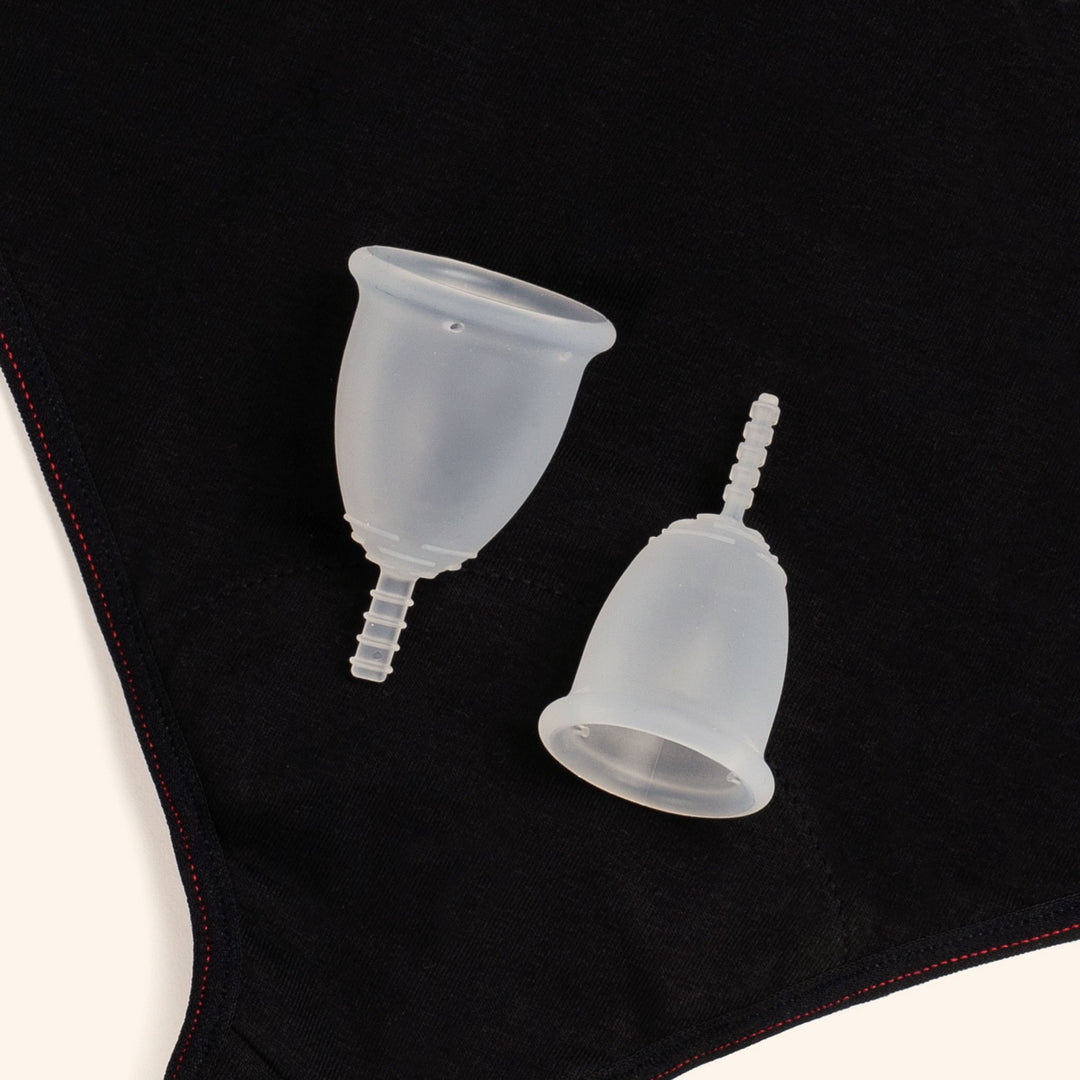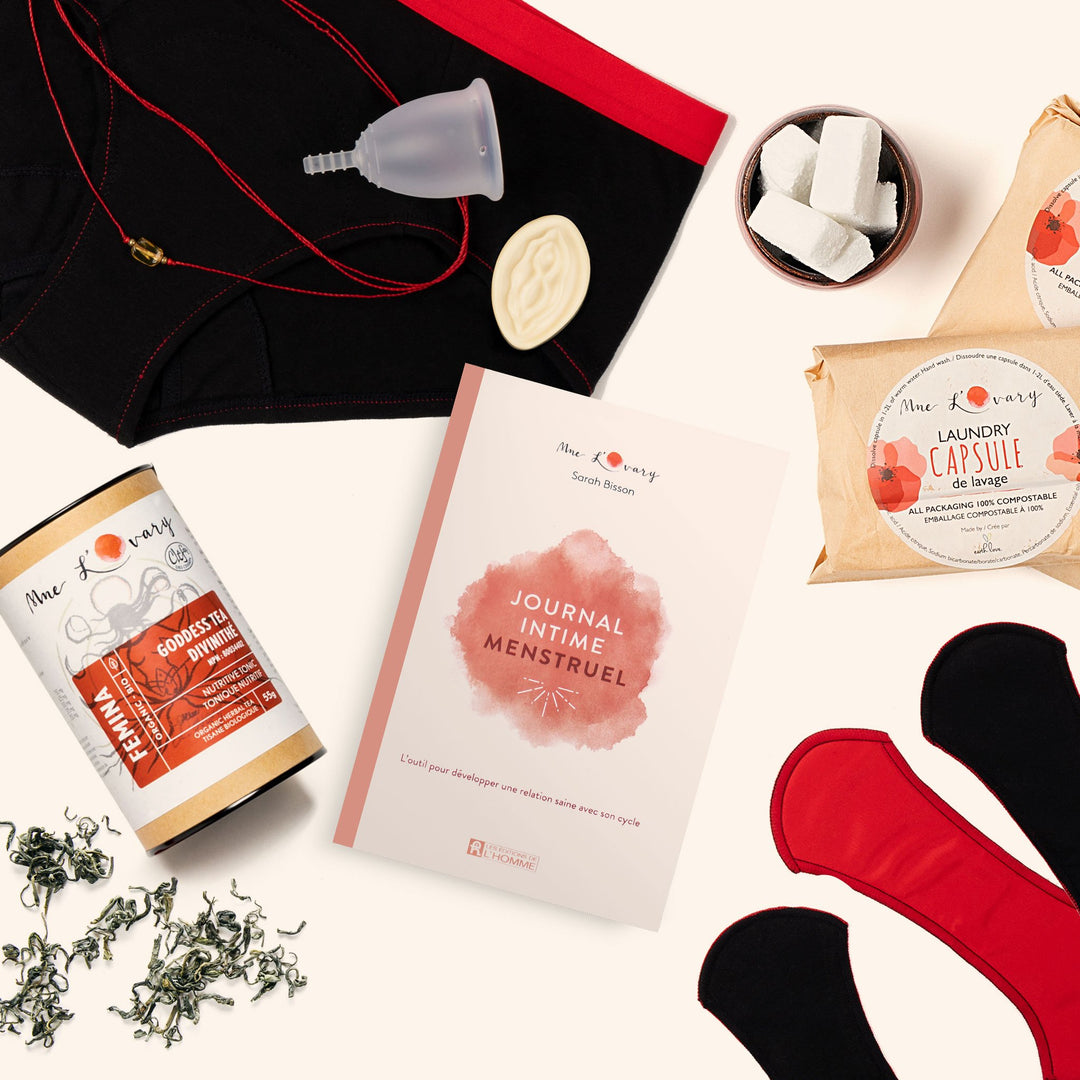Menstrual cup guide
At Mme L’Ovary, our mission is to help you experience a comfortable period while having a positive impact on the environment. That’s why we’ve put together this practical guide covering how to use and look after your menstrual cup. If this guide leaves you feeling inspired, why not try out FleurCup menstrual cups for an easy, breezy, zero waste period. FleurCup menstrual cups will get you through your period more comfortably, and they’re zero waste too, so you’re doing the planet a solid.
Saying hello to menstrual cups means saying goodbye to pads and tampons!
Each cup is made of either silicone or latex, and you insert one into your vagina to collect menstrual blood. Your vaginal muscles keep it in place, and you can wear it for up to 12 hours.
However, we recommend emptying it every 4 to 6 hours depending on your flow in order to mitigate the risk of toxic shock.
Menstrual cup guide
Menstrual cups are great alternatives to tampons and pads, because they have way longer lifespans. You can reuse the same cup for years, unlike other forms of protection that you have to chuck out after a single use! Plus, when compared to tampons, cups pose a lower risk of irritation, vaginal infection, and toxic shock syndrome.
And because they prevent blood from coming into contact with the air, cups don’t produce any odours. You can even urinate comfortably while your cup is in place!
To use your menstrual cup properly and effectively, wash your hands before and after you handle it. When your cup is full, you’ll need to remove and empty it. Before reinserting it, you’ll have to rinse it thoroughly.
You want to empty your menstrual cup at least 2 or 3 times a day. Between periods, you’ll need to remember to boil your cup so it’s sterilized for next time. Keep your eyes, fingers, and nose on guard for signs of deterioration, like a sticky or powdered film, discolouration, or odours.
It can be hard to decide which menstrual cup size is right for you. Everyone who menstruates is different, and you have to think about a few factors.
But don’t worry – we’re here to help!
1. Choose your cup based on your flow.
The size of your menstrual cup depends on the heaviness of your flow. If your flow tends to be heavy, you’ll likely need a larger cup. The menstrual cup FleurCup comes in two sizes:
- Small, for people with a light-to-medium flow.
- Large, for people with a medium-to-heavy flow, and people who’ve given birth.
2. Choose your cup based on whether you’ve given birth vaginally and your sexual experience.
The birth canal becomes larger after delivering a baby. People who’ve given birth vaginally can therefore choose a wider menstrual cup if necessary.
If you’ve never had sex, your best bet is the smallest size.
It’s important to choose a menstrual cup compatible with the strength of your vaginal muscles in mind. If you feel any discomfort, your cup might be too large, or you might’ve inserted it too high up the vaginal canal. Lower your cup or choose a smaller size.
If your menstrual cup leaks or is difficult to remove, it might be too small. If it doesn’t expand properly when it’s inside your vagina, and if it causes pain or discomfort, it’s probably too large.
You can try a few different folding techniques. For example, you can try to flatten your cup and fold it in half.
You can also try pressing your finger into one side of the funnel, which should make your cup take on a tulip shape. It’ll unfold inside your vagina.
First, find a spot where you can relax. That might be a washroom, bathtub, shower, or bed. It’s up to you! The most important thing is that you feel comfortable and at ease.
To insert your menstrual cup,
part your labia and gently insert the cup funnel side up.
Once you feel your vagina opening, insert the cup and rotate it a few times until you’ve found a comfortable position.
Slowly release it so it can gently unfold.
If you’re having a hard time unfolding it, put it at the entrance of your vagina first. Then help it unfold by sliding your fingers up to the rim to let air in. Now you can twist it in so it sits in a comfortable spot.
Positioning your menstrual cup
First, cups sit lower than tampons. Yours might move a little as it finds its own position in relation to the contours of your body.
To avoid leaks, it’s important for the cup to be located below or around your cervix.
To avoid discomfort, your cup’s little stem shouldn’t protrude or sit right at the entrance of your vagina.
Removing your menstrual cup
Once they’re in place, menstrual cups produce a seal, so you should avoid pulling directly on the stem because that’ll create a suction effect.
Instead, while squatting, start pushing with your pelvic muscles. Your cup will gradually come down, and guiding it the rest of the way out will be a lot easier.
But you’ll still need to break the seal. You’ve got 3 steps:
1. Pinch the bottom of the cup.
2. Gently pull the stem while wiggling it from side to side.
3. Insert a finger until you feel the cup’s rim, then create space between the cup and your vaginal wall.
When you’re at home, you’ll need to empty your cup and rinse it under running water after each use (2 to 3 times a day, minimum). You can wash it with any type of gentle soap.
If your sink isn’t next to a toilet, you can use a tissue or some toilet paper to dry your cup.
If you’re not at home, try to find a private public restroom with a toilet and a sink. We know, we know. Sometimes, that’s a lot easier said than done. Don’t panic! Here’s what you do when there’s no sink:
Wash your hands thoroughly before entering the bathroom stall.
Then, after emptying your cup in the toilet, take some paper towel or toilet paper and wipe the exterior. You should also make sure that the small holes along the edge are clean.
When you’re done, wipe the interior. Now you can put it back in.
Just don’t forget to clean it when you get home.
At the end of your cycle, we recommend disinfecting or sterilizing your cup. You’ll need to:
1. Boil water in a pot.
2. Put your cup in the boiling water, making sure it stays near the surface. You can use a spoon to make that work.
3. Your cup should boil for at least 5 minutes but for no more than 10. Leave it to dry on a clean drying rack.
Frequently asked questions
The lifespan of a cup varies from brand to brand. Generally, cups last between 5 and 10 years.
Buying one means significantly reducing your environmental impact and waste production.
Your period blood is already a pretty effective lubricant.
But you can also lubricate your vagina with a little water to help with insertion. There are also water-based lubricants available at the drugstore.
Or you could try a gentle oil, like coconut oil. Whatever oil you choose, use it sparingly because it can damage the silicone.
You’ll have no problem swimming with a menstrual cup.
Unlike tampons, which fill up with water, cups don’t hold any water at all.
We don’t recommend wearing our reusable menstrual cups during sex because penetration can be uncomfortable.
But there shouldn’t be any issues for any other kind of sexual contact!
Remember that a cup isn’t a replacement for contraception and doesn’t protect against STIs.
Menstrual cups do not protect against unwanted pregnancies.
The best course of action is to ask your partner to wear a condom. You can also wear a female condom or use another method of birth control.
Just like tampons, menstrual cups carry some risk of toxic shock syndrome.
To avoid TSS, rinse your cup every 4 to 6 hours.
In some cases, menstrual cups can move an IUD, but many people use both without any issues.
If you have an IUD, talk to your doctor before using a menstrual cup.
It’s possible, but we don’t recommend it. You need to empty your cup every 4 to 6 hours.
We suggest using external protection overnight, like Mme L’Ovary’s nighttime panties, for example. Still, it’s possible to wear it overnight if you don’t have any other options.
If you want to use a cup while you sleep, insert it right before you go to bed and take it out as soon as you wake up. And remember that you absolutely can’t wear one for more than 12 consecutive hours.
In the weeks after you give birth, you’ll experience a type of bleeding called lochia. It can last for up to 6 weeks after delivery.
During this time, you shouldn’t insert anything into your vagina to avoid introducing bacteria that could travel up to your uterus.














